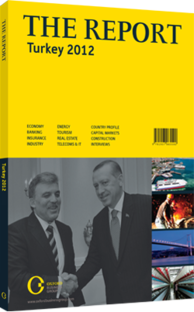A business-friendly package: Incentives and other recent tax developments
Foreign direct investment to Turkey totalled $74.8bn in the past five years. This is mostly due to the business-friendly environment prevailing in the country and the government’s continuous efforts to incentivise investments by both local and international investors.
NEW REGIME: Within this framework, the government has recently announced a new investment incentive regime which can be described as the most comprehensive incentive package to date. The incentives provided by the new regime stand on four pillars:
• General incentives: Customs duty and value-added tax (VAT) exemptions are provided for the import or domestic purchase of machinery and equipment.
• Regional incentives: Under the new regime, Turkey has been divided into six regions based on the socioeconomic level of development. As the system seeks to reduce the socio-economic disparities between the regions, the least-developed regions are incentivised the most. The incentives include a reduction of the corporate tax rate (i.e. the size of the reduction varies from one region to another), free allocation of land for factory locations, compensation by the Treasury of the employer’s share of social security premiums and support on interest payments arising from investment loans.
• Incentives for large-scale investments: Provided that the total investment amount exceeds certain thresholds, research and development (R&D) and intensive investments, which will enhance Turkey’s competitive capacity in international markets, can benefit from the majority of the above-mentioned incentives regardless of where the investment is located. However, the level and duration of the incentives will vary by region.
• Incentives for strategic investments: Investments regarding the production of finished or intermediate goods in sectors which currently suffer a high level of import dependency, as well as R&D and technology-intensive investments, qualify as “strategic investments” for the purposes of the new regime.
These investments will benefit from the majority of the above-mentioned incentives regardless of where the investment is located. As Turkey embraces the principle of non-discrimination among local and international investors, both sets of investors will have equal access to these incentives.
COOLING DOWN: The Turkish economy enjoyed strikingly high growth rates in 2010 and 2011, leading to comments that it was “overheating”, particularly since the foreign trade deficit has become so unsustainably large. The government has recently taken certain measures to address these two linked issues.
The resource utilisation support fund applicable to non-cash imports (i.e. imports which are paid for after a credit period, rather than immediately in cash at the time of import) has been raised from 3% to 6%. This fund is essentially a tax on such imports. Moreover, the special consumption tax applicable on the import of certain automobiles and vehicles has been increased.
INSPECTION REFORM: Another recent change to the system is the restructuring of the tax inspection mechanism. In the past, tax inspections were carried out by different bodies, which were affiliated with the Ministry of Finance or the Revenue Administration. Under the new structure, these bodies are merged under one entity – the Directorate of Tax Inspection Board – which is directly affiliated with the Ministry of Finance.
With this change, the government is looking to improve the efficiency of the system through elimination of any bottlenecks arising from a lack of coordination among the different bodies and also to increase the independence of the inspectors.
A more fundamental issue is that the Tax Procedures Code and the Income Tax Code currently in force were written in 1960. Unsurprisingly, the comprehensibility of these codes has deteriorated over time and certain contemporary concepts such as financial derivatives are not covered. A main objective is to simplify the wording and reduce the number of articles. The new codes are not likely to come into effect until 2013.
You have reached the limit of premium articles you can view for free.
Choose from the options below to purchase print or digital editions of our Reports. You can also purchase a website subscription giving you unlimited access to all of our Reports online for 12 months.
If you have already purchased this Report or have a website subscription, please login to continue.

